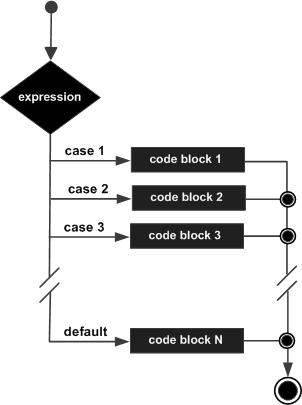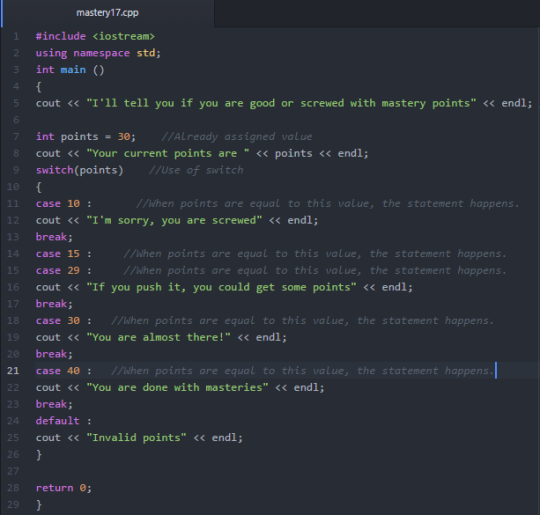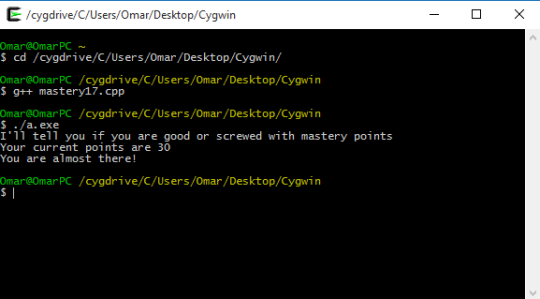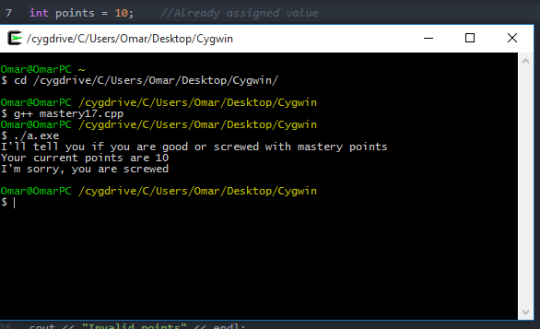For example:
I’m using the same example but the elif is included.
]]>
if(condition):
do something
Let’s see an example with food because I’m hungry. My code will basically ask if the food is ready by having the user input dictate its state of readiness (that explains the variable name) and then my conditional if checks the data to perform an action, it prints “yay” if the food is ready. But the operator = helps me know if the user input is right. We can evaluate other values by using other operators such as < > to compare values.
readiness = input(“Is the food ready? “)
if(readiness == “yes”):
print(“yay”)
We can also combine two conditionals in an if statement by using the Boolean operation and. I added a new value which is my food temperature so my conditional are always met and my if statement will work.
readiness = input(“Is the food ready? “)
temperature = input(“Is the food hot? “)
if(readiness == “yes”) and (temperature == “yes”):
print(“yay”)
The same can be done with the operation or. What or does is it basically combines two conditionals and the action will be executed if either conditions are met. So in this case it doesn’t matter if our readiness or temperature are not hot or ready if one of them is true our action will be executed.
readiness = input(“Is the food ready? “)
temperature = input(“Is the food hot? “)
if(readiness == “yes”) or (temperature == “yes”):
print(“yay”)
So my values were checked and my program acted accordingly. But what if the value is not what I asked for? There is an operator called else that solves this problem. In this case, else doesn’t have to include a condition because we don’t care about anything else, we just want to have our food right? All I have to do is write else below my if statement without an indentation and tell my else what to do.
readiness = input(“Is the food ready? “)
if(readiness == “yes”):
print(“yay”)
else:
print(“hurry up, I’m hungry”)
There is another conditional that is a mixture of else and if and it must be typed between your if and else. It is called elif. It basically sets up another conditional so it is a lot more like it but it is still like else.
readiness = input(“Is the food ready? “)
if(readiness == “yes”):
print(“yay”)
elif(readiness == “yep”):
print(“yay”)
else:
print(“hurry up, I’m hungry”)
]]>Thanks for watching !!!

]]>
Enjoy.
]]>
Here is the link to my video:
]]>
Switch is a statement that tests a variable for equality in a list of given conditions. It is somehow a summarized version of IF when you have a lot of conditions.
This flow chart may help you understand better, and this webpage too:

The default syntax of switch goes like this:
switch (expression) case “condition” : outcome [default:statement] //This is used when the variable input isn’t a valid option.
So, for the purpose of this mastery, lets create a program were the user can input his points on masteries so far and tell him if his good or screwed. Do as follows:
- Create our “basic” program.
- Inside the int, declare a char variable with an assigned value.
- Use switch to condition the outcome and tell the user if his good or screwed.
Your program should look something like this:

Now let’s test it:

Let’s just play with another value:

Great! Now you know what and how to use switch conditional.
]]>Switch is a statement that tests a variable for equality in a list of given conditions. It is somehow a summarized version of IF when you have a lot of conditions.
This flow chart may help you understand better, and this webpage too:

The default syntax of switch goes like this:
switch (expression) case “condition” : outcome [default:statement] //This is used when the variable input isn’t a valid option.
So, for the purpose of this mastery, lets create a program were the user can input his points on masteries so far and tell him if his good or screwed. Do as follows:
- Create our “basic” program.
- Inside the int, declare a char variable with an assigned value.
- Use switch to condition the outcome and tell the user if his good or screwed.
Your program should look something like this:

Now let’s test it:

Let’s just play with another value:

Great! Now you know what and how to use switch conditional.
]]>